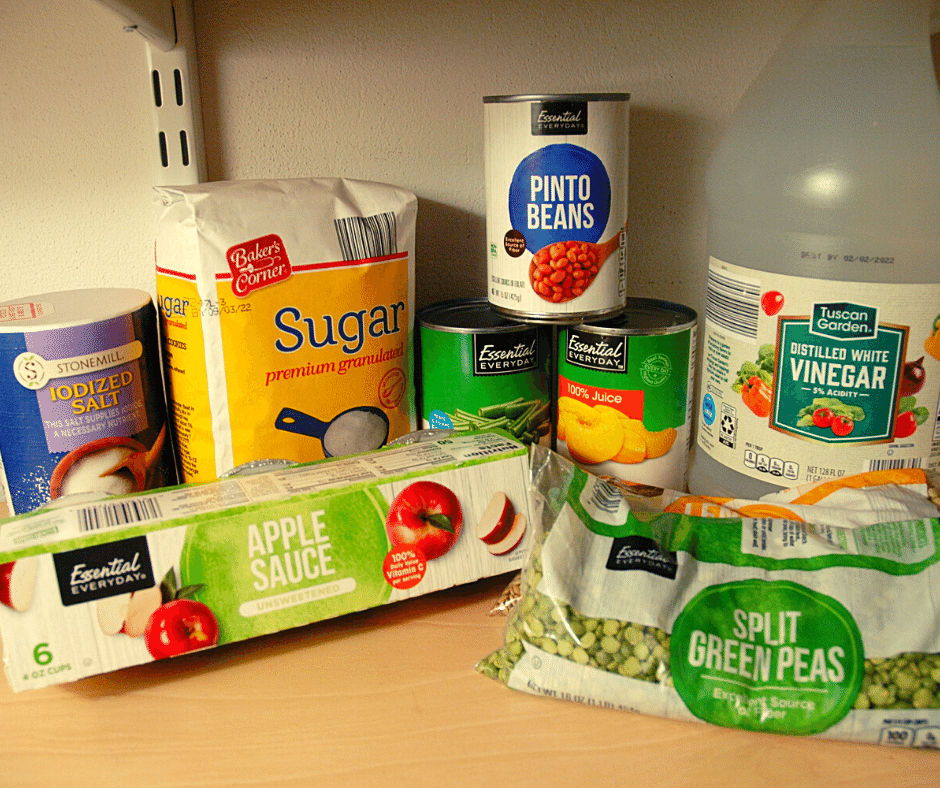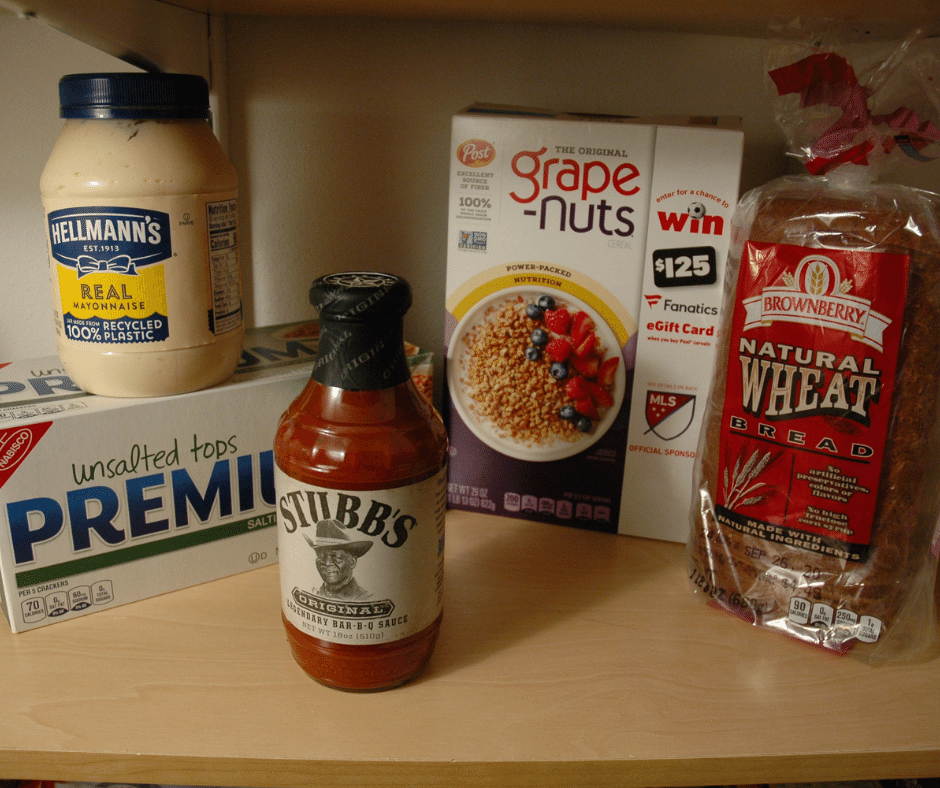This post was last updated on February 25th, 2022 at 12:14 pm
A spike in food price inflation has renewed debate over the wisdom of substituting generics for name-brand products. Over the past 12 months, food prices have risen by more than 5%, according to the Bureau of Labor Statistics. If you’re not substituting some of your grocery items for generics, you might be missing out on some easy savings. However, some products are better candidates than others for substituting generics.
Emotions can interfere with evaluations of generic- and name-brand products because perceptions and actual differences in product quality are sometimes difficult to distinguish. I wouldn’t dare accuse brand loyalists of “imagining” that brand names are superior because, in fact, sometimes brand names are superior. (Five of them are listed below.) At the same time, I’m skeptical of objections to generic brands that simply parrot the marketing efforts of name brands.
Understanding generic vs. store brands
At the risk of further confusing things, I should note many shoppers consider generic and store brands to be synonymous. Both tend to be cheaper than name brands. However, there can be differences in quality from one store brand to another. Meanwhile, generics tend to be similar in quality no matter which store carries them, in my experience. It’s an open secret that some store brands are the exact same product as name brands, with the only difference being the label and price.
Certain stores, such as Aldi, build their business model around selling store brands and carry a limited selection of name brands. As a result, the savings can be far greater at stores like Aldi than a traditional grocery store.
My ingredients-list test
When buying food, I have a simple method for deciding whether to buy generic/store brands or name brands. I look at the list of ingredients. If it’s short, the generic or store brand is a candidate for my shopping cart. The shorter the ingredients list, the easier it is for a manufacturer to mimic the qualities, namely texture and flavor, of a name brand. The longer the ingredients list, the more complicated the recipe and the more difficult it is for a manufacturer to mimic the qualities of a name-brand product. There are exceptions, of course, but I’ve found my ingredients-list test to be a dependable and quick way to save money on groceries without compromising quality.
Read: Use your morning routine to fight inflation
For example, I find generic canned vegetables to be as tasty as their name-brand counterparts. The same holds true for dried beans or frozen fruits. A bean is a bean. A blueberry is a blueberry. As far as I know, drying a bean or freezing a blueberry doesn’t depend on a special process known only to name-brand manufacturers.
Milk is another ideal candidate for generic or store-brand substitution. Only one thing goes into milk: milk. I’m no livestock expert, but from what I know about farming, the cows making milk for name brands are the same cows making milk for generic and store brands. At farms, there are no “generic” cows and “brand-name” cows.

Products regulated by the FDA
Concerns about quality linger over any decision to buy generics, though certain types of products can be safely substituted because they’re heavily regulated by the federal Food and Drug Administration. Sunscreens and prescription drugs are the best examples. Because these products must meet certain quality standards, the generic/store-brand versions are typically as safe and effective as the name-brand counterparts.
Where the debate on whether to switch to generics becomes contentious, at least in my mind, is with less regulated, more heavily processed products.
When name brands are superior
Some websites tout switching to generics for nearly everything, while consumer advocate Clark Howard noted some exceptions in a 2017 article, “Store brands fall flat in survey.” There are certain generic products that, based on my experience, aren’t worth buying because they sacrifice quality. Being frugal isn’t about being cheap, after all. It’s about maximizing value.
Here are five name-brand products that I’ve struggled to replace with generic/store brands.
- Premium Saltines (unsalted tops): I’ve tried the generic version of these crackers, and they feel like a ball of mush in your mouth—like a second after your tongue touches one.
- Grape-Nuts: Some blogs say you can swap cereals for generics no problem. I’m not trying to be a cereal snob here, but I disagree. Except for oatmeal, I can’t say I prefer any of the generic brands of cereals over the name brands, and that’s especially true for Grape-Nuts. One time, I made the mistake of buying the generic version of Grape-Nuts, and the box sat in the pantry for months uneaten. It tasted like cardboard bits. (I ultimately used them as part of a ham glaze.)
- Hellmann’s Real Mayonnaise: I’m not alone on this one. Consumer Reports in 2010 studied whether people can tell the difference between generic and name brands, and Hellmann’s stood out as preferable. “It’s smooth and moderately thick, fresher-tasting, and more flavorful, with a nice combination of saltiness and a tangy vinegar note,” the report states.
- Stubb’s Legendary Bar-B-BQ Sauce: I can’t imagine a generic coming close to replicating Stubb’s. For that matter, most brand-name BBQ sauces don’t come close. I dislike sweet sauces, and Stubb’s is one of the few sauces on the shelf that doesn’t list sugar as its first or second ingredient (Tomato puree and vinegar are the first two ingredients. Sugar is No. 3).
- Brownberry Bread (Catherine Clark’s Original Recipe): It’s not as good as the Brownberry Bread I remember eating as a kid because the brand has been sold multiple times. However, there aren’t many breads like it on grocery shelves. The most comparable store-brand bread, in my opinion, is Aldi’s Knock Your Sprouts Off. It’s similar in texture and about $2 cheaper per loaf.
Notice that all the products in the above list include multiple ingredients and involve a unique recipe. The more complicated the flavors and the more sensitive your palette is to alterations in flavor and texture, the more likely you are to be disappointed with a brand name’s generic counterpart.
Use generic and store brands to create homemade versions
You can both save money and improve the quality of food in your fridge by using generic ingredients to make your favorite foods from scratch. I do this with this barbecue sauce. I’ve recently cut back on buying Stubb’s and instead make my own batches of a sauce that tastes a lot like Stubb’s.
Barbecue sauce is ideal for making from scratch because its high acid content allows for longer storage. There’s a recipe online to make just about anything, including sunscreen. It becomes a question of how much time you’re willing to devote to making items from scratch. On the one hand, homemade versions of store-bought items can save money. On the other hand, there is a time cost.
What’s on your generic/store brand list?
I’m not an authority on what items are best to substitute with generics. Everybody’s food preferences are different, and so you have to test your boundaries. And, I suspect some readers would argue the generic/store brands in their pantries are every bit as good as my Brownberry Bread, Premium Saltines, Grape-Nuts, Hellman’s, and maybe even Stubb’s.
There’s no one way to resolve the generic vs. name brand dilemma. My ingredients-list test offers consistent dollar savings, though not necessarily maximum savings. My test is designed it to avoid compromising quality.
If you try out a generic and don’t like it, don’t be afraid to return. Many stores have generous return policies, and I’ve rarely had trouble returning an item so long as I bring the receipt. If you have success with a certain generic or store brand, please let me know. I’d like to try it. Because maybe there is amazing store-brand version of Grape Nuts out there, and I just don’t know about it yet. Maybe it has that perfect crunch.

